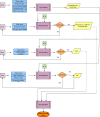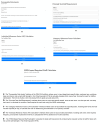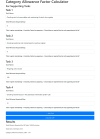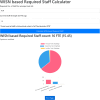A web-based platform for optimizing healthcare resource allocation and workload management using agile methodology and WISN theory
- PMID: 40102889
- PMCID: PMC11916971
- DOI: 10.1186/s12913-025-12473-7
A web-based platform for optimizing healthcare resource allocation and workload management using agile methodology and WISN theory
Abstract
Background: Effective healthcare workforce management is critical for ensuring quality care delivery, particularly in resource-constrained settings. The World Health Organization's (WHO) Workload Indicators of Staffing Need (WISN) methodology provides an evidence-based framework for optimizing staffing levels. However, manual implementation of the WISN methodology is labour-intensive, error-prone, and time-consuming. To address these challenges, the Platform for Resource Allocation and Optimization for Healthcare Facilities (PRAYOJN) platform was developed as a web-based tool to automate WISN calculations, streamline data analysis, and improve workforce planning.
Objective: To develop and validate a web-based system that automates the WISN methodology for healthcare workforce planning.
Methods: The PRAYOJN platform was developed using an agile methodology, structured over five iterative sprints. These sprints incorporated stakeholder feedback to refine system functionalities, ensuring adaptability to real-world healthcare needs. The platform integrates data for principal, supporting, and ancillary tasks to calculate staffing requirements. Key functionalities include automated computation of Available Work Time (AWT), Standard Workload (SW), Category Allowance Factor (CAF), and Individual Allowance Factor (IAF). Alpha testing validated usability and accuracy, while beta testing in a clinical phlebotomy department assessed real-world performance.
Results: The platform calculated an ideal staffing requirement of 15.53 Full-Time Equivalent (FTE) for the phlebotomy department, aligning closely with the current staff strength of 15 FTE. Agile development ensured iterative improvements, enhancing user interface (UI) and user experience (UX). Feedback highlighted the platform's user-friendly design, with dynamic visualizations such as pie charts and bar graphs aiding workload interpretation. Users praised its efficiency, adaptability, and role in reducing calculation complexity.
Conclusion: PRAYOJN modernizes and enhances WISN-based workforce planning by automating workload calculations, improving data visualization, and supporting real-time decision-making. Its scalability and intuitive interface position it as a valuable tool for optimizing staffing efficiency across diverse healthcare environments.
Keywords: Agile development in healthcare; Healthcare resource allocation; Healthcare workforce optimization; PRAYOJN platform; Staffing automation; Workforce planning tool; Workload indicators of staffing need (WISN).
© 2025. The Author(s).
Conflict of interest statement
Declarations. Ethics approval and consent to participate: Since the study was mainly on software designing and the operational study was based on observations and interaction with management team (did not involve human data) the study was exempted from IRB approval by the Institutional Ethical Review Board of the Institute of Health Management Research, Bangalore (IIHMR-B). Consent for publication: Not applicable. Competing interests: The authors declare no competing interests.
Figures







Similar articles
-
A Workload Indicators of Staffing Need (WISN) based framework and implementation tool for dietitians at South African central and tertiary public hospitals.BMC Health Serv Res. 2025 Jan 23;25(1):130. doi: 10.1186/s12913-025-12286-8. BMC Health Serv Res. 2025. PMID: 39849523 Free PMC article.
-
Applying the workload indicators of staffing need (WISN) method in Namibia: challenges and implications for human resources for health policy.Hum Resour Health. 2013 Dec 10;11:64. doi: 10.1186/1478-4491-11-64. Hum Resour Health. 2013. PMID: 24325763 Free PMC article.
-
Assessment of staffing needs for physicians and nurses at Upazila health complexes in Bangladesh using WHO workload indicators of staffing need (WISN) method.BMJ Open. 2020 Feb 13;10(2):e035183. doi: 10.1136/bmjopen-2019-035183. BMJ Open. 2020. PMID: 32060164 Free PMC article.
-
Implementation of the Workload Indicators of Staffing Need (WISN) Method in Determining Staff Requirements in Public Health Laboratories in Serbia.Disaster Med Public Health Prep. 2022 Feb;16(1):71-79. doi: 10.1017/dmp.2020.133. Epub 2020 Jul 16. Disaster Med Public Health Prep. 2022. PMID: 32669153 Review.
-
Use of the WISN method to assess the health workforce requirements for the high-volume clinical biochemical laboratories.Hum Resour Health. 2022 Jan 28;19(Suppl 1):143. doi: 10.1186/s12960-021-00686-w. Hum Resour Health. 2022. PMID: 35090473 Free PMC article. Review.
Cited by
-
Early diagnosis and survival outcomes in silicosis: a retrospective cohort study of 11,809 patients in Guangdong Province, China (1956-2020).Front Public Health. 2025 May 1;13:1587161. doi: 10.3389/fpubh.2025.1587161. eCollection 2025. Front Public Health. 2025. PMID: 40376052 Free PMC article.
References
-
- Asres GD, Gessesse YK. Workload indicators of staffing need (WISN) method for health workforce planning at health facility: A scoping review. Hum Factors Healthc. 2024;6:100078.
MeSH terms
LinkOut - more resources
Full Text Sources

